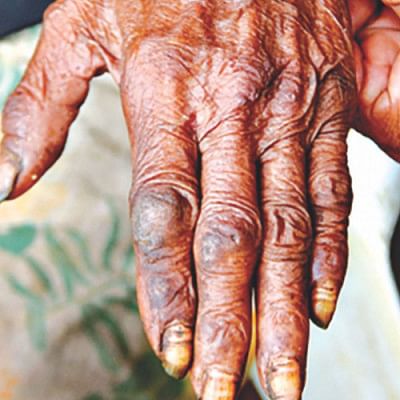What happens when sand fleas burrow in your skin?

Tungiasis, a tropical disease associated with poverty, is caused by the penetration of female sand fleas into a person's skin, usually in their toes or feet.
When the female sand flea (Tunga penetrans or Tunga trimamillata) penetrates the skin, it begins quickly growing. Within days, this growth causes intense inflammation with pain and itching. Generally, once all eggs are expelled into the environment through a tiny hole in the skin and the parasite has died, symptoms regress. But in endemic settings, residents are frequently re-infected and end up with hundreds or thousands of embedded sand fleas. While mild cases of tungiasis with a few embedded sand fleas can be treated surgically, in very severe tungiasis surgical removal of embedded sand fleas is not possible.
"Our findings are a good argument to make a call for action for those countries in which tungiasis occurs in remote settings and where health coverage is poor," the researchers say. "Dimeticone should be made available to treat patients in an early stage of disease to avoid life-threatening sequels."

 For all latest news, follow The Daily Star's Google News channel.
For all latest news, follow The Daily Star's Google News channel. 



Comments